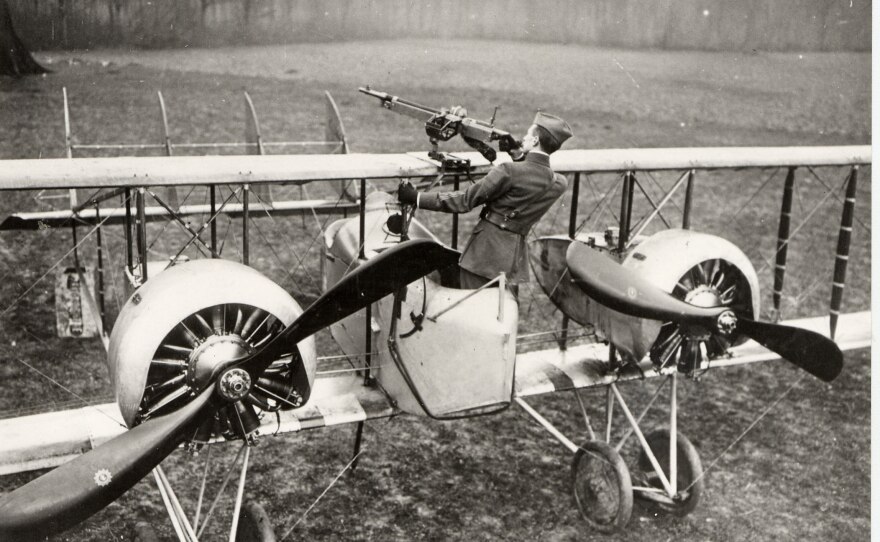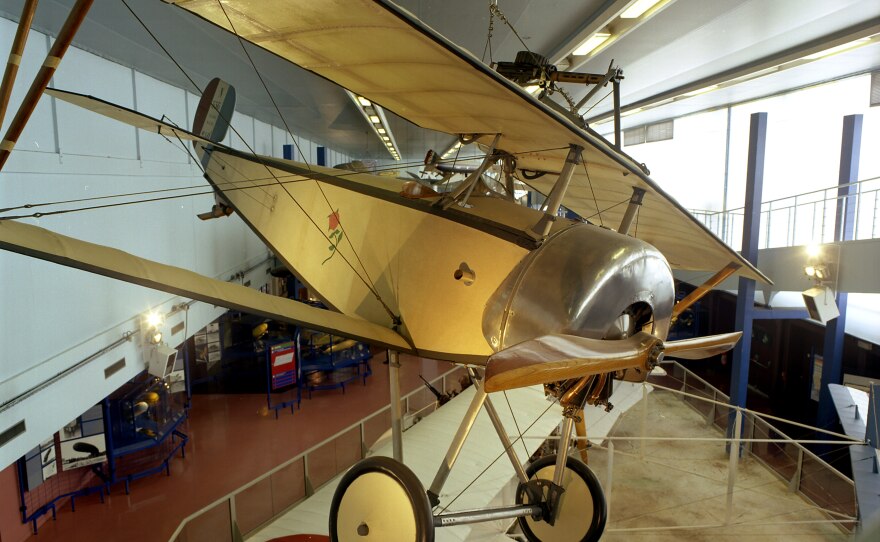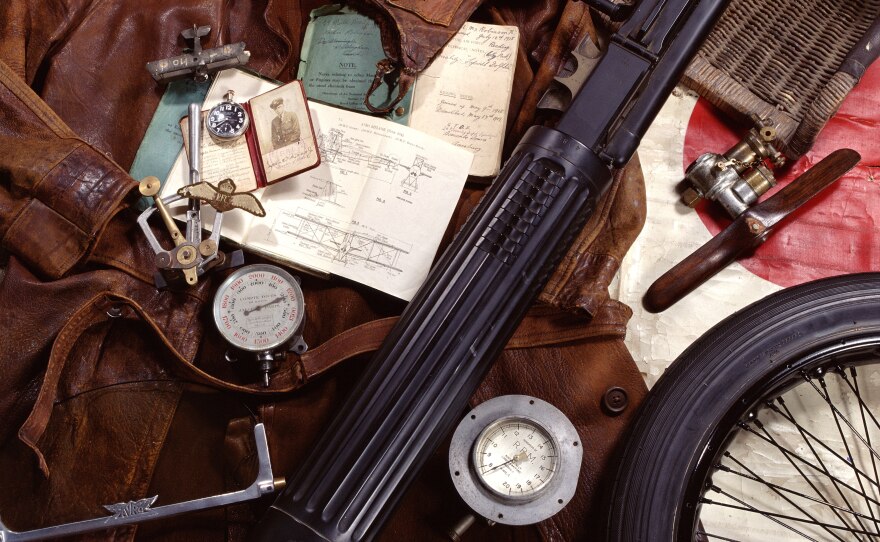
A hundred years ago, the world was racing headlong into war in Europe. Aviation was a new and untried tool for military leaders, and it soon became a powerful weapon. In July of 1914, it had only been 10 years since the Wright brothers first flew at Kitty Hawk, and and aviation was flourishing around the world.
Aviators were flying longer and longer distances. Frenchman Louis Bleriot crossed the English Channel. Air meets were drawing thousands of spectators to see daredevil pilots and their fast, new planes. Large multi-engine aircraft were being built by Italian and Russian visionary aviators, that could carry passenger and - more ominously - bombs.
The royal families of Europe were about to fight a war using military tactics that were 100 ears old, even though the industrial revolution had created very efficient battlefield machines and lethal chemicals. Long lines of infantry and cavalry about to be slaughtered by machine guns and poison gas.
Airplanes were very basic when the war began. Even though they were small, frail, underpowered and difficult to fly; both sides started using them on reconnaissance missions – to see beyond the battlefields to where the enemy was gathering and to determine the targets for new and larger artillery that was blasting the countryside into an unrecognizable moonscape. An American pilot, James McConnell, flying for the French squadron No. 124, The Lafayette Escadrille, described the countryside of Verdun in Northern France as “…a sinister brown belt, a strip of murdered nature. It seems to belong to another world. Every sign of humanity has been swept away.”
The first observer pilots were armed only with cameras. But that soon changed – and cameras were exchanged for pistols. What began as friendly waving between aviators became gun battles in circling aircraft at surprisingly close range. The airwar was developing
Soon those observation airplanes were being escorted into battle by smaller and faster airplanes to pursue the enemy, creating fighter aircraft and the fighter pilot. Stories of the so called “knights of the air “ made rich material for writers and film makers. But the bravado of their endeavors and the joy of “dancing among the clouds” was swiftly replaced with the grim realities of death. The evolution of aviation was paid for in blood and lives.
The air war ushered in the modern war...which was total war.
With fighters as escort the observation planes began to carry bombs . . . In fact early bombs were just artillery shells. Soon the bombers began to attack factories that made weapons and then cities. Civilians were no longer far from the front lines.
The air war ushered in the modern war...which was total war.
Between 1914 and 1918 the advances in aviation driven by total war created airplanes with larger and more powerful engines, making for bigger and faster airplanes, which carried more and flew further.
The first world war transformed aviation and soon after the war ended, bombers became commercial airlines and fighter planes became air racers. Countries large and small boasted of their air born accomplishments and their aviator heroes. The whole world began to watch the skies - expecting miracles.
Dan Patterson is an aviation historian and photographer. You can see more of his photos at his website, www.flyinghistory.com
Aviation programming on WYSO is supported in part by the National Aviation Heritage Alliance and The Air Force Museum Foundation.






